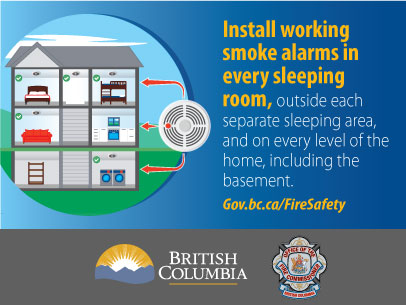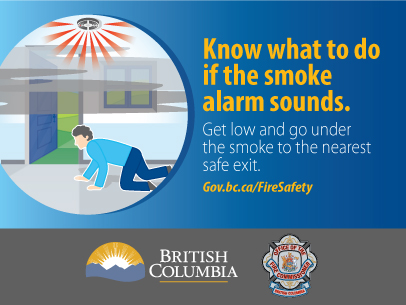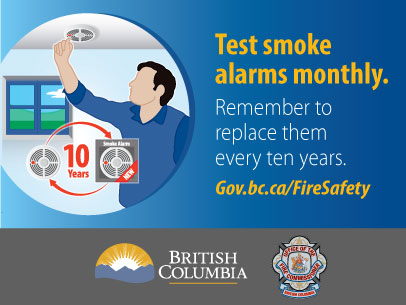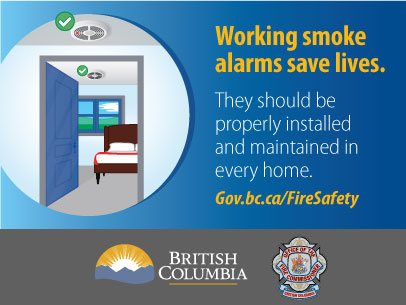Smoke alarms social media toolkit
Only working smoke alarms save lives! Increase awareness in your community about the importance of having a working smoke alarm on every level of a home, and inside and outside each sleeping area.
If you have a broken or expired smoke or carbon monoxide alarm, replace it and drop your old one off for free at over 200 recycling locations in B.C. Learn more at productcare.org/alarms.
Social media toolkit
How to use this toolkit
Share this content on social media channels. You can copy this content or customize it.
Messages to share
These key messages have been formatted to be used in a tweet, or a post.
- Working smoke alarms save lives! Install smoke alarms outside each bedroom and sleeping area. Put them on every level of the home
- Make sure your smoke alarms work! Your family is not safe if they can’t hear the smoke alarms
- Practise your home fire escape plan so everyone in your home knows what to do when the smoke alarm sounds
- Test smoke alarms every month and replace 9-volt smoke alarm batteries at least once every year, or according to manufacturers' recommendations
- Smoke alarms do not last forever. Get new smoke alarms every 10 years, or according to manufacturers' recommendations
- If you have a broken or expired smoke alarm, replace it and drop it off for free at more than 200 recycling locations across BC. Learn more at productcare.org/alarms
- When you hear a smoke alarm, you may have less than 2 minutes to get everyone outside and to safety
Hashtags
#FireSafety #FirePrevention #SmokeAlarms #TestYourAlarms #TestItTuesday
Graphics
Download and use the graphics below, either by themselves or add additional information in your post to reinforce the message.
Prevention and safety messaging
- Smoke alarms are a key part of a home fire escape plan. When there is a fire, smoke spreads fast. Working smoke alarms give you early warning so you can get outside quickly.
- Smoke alarms should be installed inside every sleeping room, outside each separate sleeping area and on every level. Install alarms in the basement. Large homes may need extra smoke alarms.
- A smoke alarm should be on the ceiling or high on a wall. Keep smoke alarms away from the kitchen to reduce false alarms. They should be at least 3 metres from the stove.
- It is best to use interconnected smoke alarms. When one smoke alarm sounds, they all sound.
- Test all smoke alarms at least once a month. Press the test button to be sure the alarm is working.
- A closed door may slow the spread of smoke, heat and fire.
- Current alarms on the market employ different types of technology including multi-sensing, which could include smoke and carbon monoxide combined.
- Today’s smoke alarms will be more technologically advanced to respond to a multitude of fire conditions, yet mitigate false alarms.
- People who are hard-of-hearing or deaf can use special alarms. These alarms have strobe lights and bed shakers.
- Replace all smoke alarms when they are 10 years old.
Additional resources
Follow the links below for resources from National Fire Protection Association (NFPA) and the U.S. Fire Administration (FEMA).




